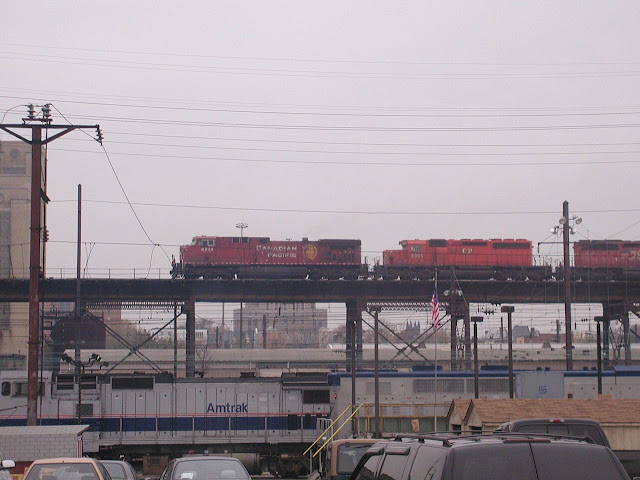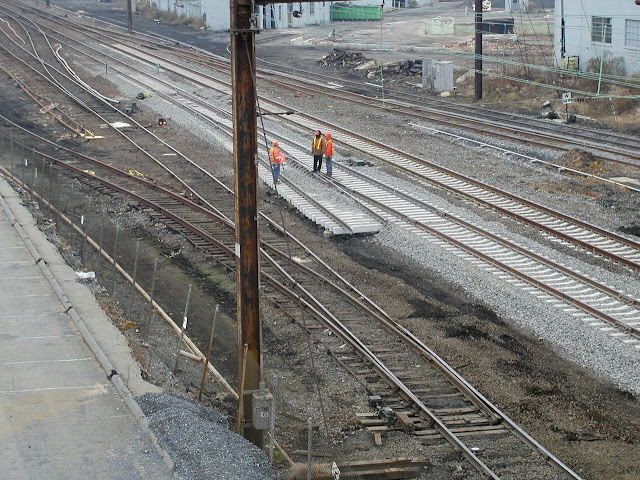You can find the full set of these photos here (or here) along with some additional ones from the same time frame.
On my way up from grad school I stopped off at the Conowingo Dam, located on the lower Susquehanna River. Built in 1928 it is the largest privately owned hydro-electric facility in the United States with an installed capacity of 548MW. In the fall it is also a Mecca for bird watchers as over 100 bald eagles may show up on any given day to swoop up fish disoriented by getting run through the turbines.
At 30th St station a run-through Canadian Pacific train was traversing the Philadelphia High Line en route to the yards in South Philly. This train would have come down from Montreal via the old D&H route to Scranton and then the former Conrail Lehigh Line. Leading power was AC4400 #9814 and SD40-2 #5398. #5398 was an old Ontario Hydro unit that bounced back and forth between CN and CP ownership before being scrapped in 2009. In the foreground is an Amtrak P32-8WH locomotive.
My Keystone train out to Lancaster was being haulted by Amtrak P42DC #11. As you can see the two station tracks have already been lifted with track bridges being used to reach the center main tracks. Later the two center tracks would be physically moved over to serve the platforms. The reason for the used of station tracks at Lancaster was to prevent the high level platforms from causing clearance issue for the through freights that plied the PRR Main Line up through the early 1980's. Note it appears that #11 has picked up a hitchhiker.
CORK interlocking tower and that adjacent compressor house to power the pneumatic switch machines.
The Lancaster Station complex was constructed in 1927 along with the interlocking tower as part of a major improvement programme by the PRR. Although service levels fluctuated throughout the 1970's and 1980's, the state kept much of the Harrisburg Line infrastructure like the major stations, intact.
From of the station.
View of the station complex from the west showing the side of CORK tower, the high level platforms and the new and old freight bypass track alignments.
New electric switch being installed for the west end of the freight bypass track with the existing alignment in the foreground.
Former Penn Central baggage car on the old mail and express track at Lancaster Station.
The new freight bypass track being assembled from pre-made panels with additional Penn Central baggage cars on the express track.
Amtrak placed it's signal maintainer school into the free space at the Lancaster station.
Station concourse providing access to the two high level platforms. Smaller cities like Lancaster were quite a bit more economically vital back before the 1980's and thus were worthy of fairly involved rail infrastructure. Today most economic activity has flowed to a handful of superstar "world" cities, mostly on the coasts and left places like Lancaster behind.
Amtrak P42DC #81 with a 3-car Keystone at Lancaster. Around this time as equipment shortages eased, Keystone trainsets were expanded to 5 cars.
One can just make out CORK tower's model board inside the bay window.
Well that's it for this little trip back in time. Next week I should be able to continue on with my PRR West Slope trip about 200 miles to the west.




















No comments:
Post a Comment